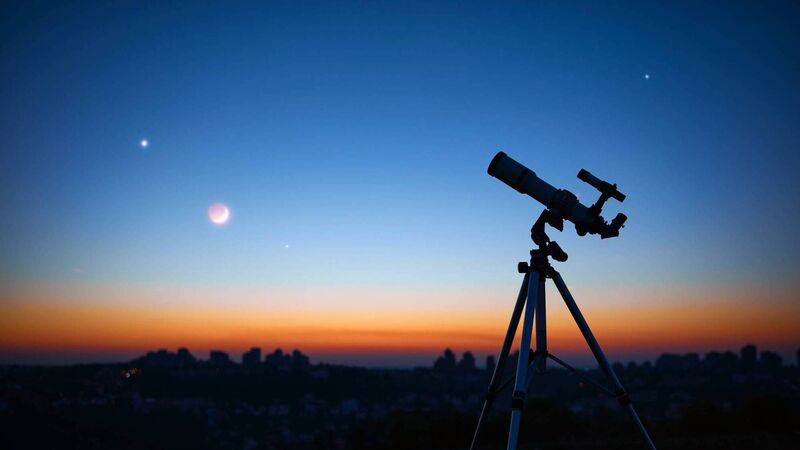November can be a good month for stargazing — if the clouds stay away.
The nights are long and darkness falls early, so even the kids have a chance to look at some stars and planets before bedtime. Saturn is visible until about 10:30pm and Jupiter until about 2am all month, and you could do worse than making them the first targets to find as soon as it gets any way darkish.
To make the task easier, we can use the Moon as our guide as it winds its way across the sky.
On November 1st the Moon is just below Saturn. This giant gas-planet is the brightest object in the vicinity of the Moon and it also displays a pale yellow colour.
With binoculars or a small telescope you will be able to see something of the planet’s spectacular rings, leftover remnants from failed moons.
Roll the clock forward to November 4 and the Moon is now just below Jupiter, which this month is the brightest object in the night sky. A careful observer might notice that neither Jupiter or Saturn twinkle as much as the stars nearby and it’s that stability of brightness which is a telltale sign that you’re looking at a planet rather than a star.
On November 9 the Moon can be found below a grouping of stars called the Pleiades.
Depending on your horizon, whether it’s obstructed by buildings or is clear and open, you should be able to see the Pleiades from about 8pm.
They are also referred to as the Seven Sisters as most people can see seven stars with the unaided eye. The stars themselves are young by the standards of our Sun, being about 100 million years old
compared to 4,500 million for the Sun.
There is some evidence that planets may be forming around at least one of the Pleiades, but any such planets would be bathed in lethal doses of UV radiation.
By November 10 the Moon’s motion puts it below Mars.
The planet rises a little later than Saturn or Jupiter, and is visible from about 11pm onwards.
Between the start of November and January 12, 2023, Mars appears to move very slowly backwards in the sky against the surrounding stars — you would need to observe carefully from week to week to be aware of it.
This is because the Earth, which is closer to the Sun, is presently overtaking Mars in its orbit and so for a few months the Red Planet displays this backwards or “retrograde” motion.
The behaviour was well known to our ancestors, who duly incorporated it into astrological predictions and still do so to this day.
But the greater relevance of the behaviour was its support for the idea that the Sun, rather than the Earth, was the “centre of the Universe”, a truly seismic shift in our view of our place.
In fact the Sun holds no such vaunted position, being one of 100,000 million stars in our galaxy which itself is also NOT at the centre of our vast cosmos, yet another seismic shift in our thinking.
On the night of November 17, into the morning of the 18th, the
annual Leonids meteor shower takes place as Earth collides with dust grains left behind by comet Tempel-Tuttle, which was discovered in 1865. The Leonids are an unpredictable meteor shower, so even though the Moon will interfere it’s definitely worth donning the warm coat and hat and heading outdoors for a look.
As we have often mentioned before, the best way to observe meteors is with your dark-adapted eyes, so give them 15-20 minutes (ideally) without looking at lights or mobile phones, etc., and you just might be surprised how much you see!
- Dr Niall Smith is the Head of Research in MTU, Cork and the Head of Blackrock Castle Observatory.


CONNECT WITH US TODAY
Be the first to know the latest news and updates







